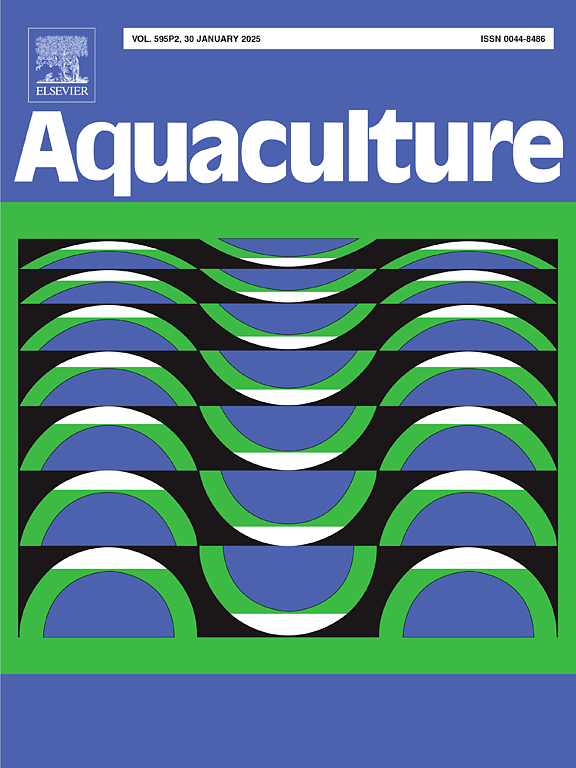Effect of the bipolar aluminum electrocoagulation model (BAEM) on heavy metal concentration, growth, immunological response, and parasitic activity in cultured Dicentrarchus labrax in underground seawater
IF 3.9
1区 农林科学
Q1 FISHERIES
引用次数: 0
Abstract
This study assessed the effectiveness of the bipolar aluminum electrocoagulation model (BAEM) as a water treatment method for heavy metal pollution and parasitic load in Dicentrarchus labrax. Over a six-month experiment, the growth and health of D. labrax fingerlings were monitored under two BAEM treatment schedules: T2 (8-h daytime) and T3 (4-h daytime and 4-h night). Basic water physicochemical parameters were analyzed, and ectoparasites' prevalence, infection intensity, and mortality rate were investigated. Additionally, the growth performance and immune response of the BAEM-treated fish were compared to those of the control nontreated T1 fish. Parasitological examination of fresh skin and gill mounts revealed three common ectoparasites: the protozoan Trichodina sp., the monogenean Diplectanum sp., and the digenean Transversotrema sp. The results demonstrated significant improvements in water quality, with reduced turbidity, total dissolved solids, and heavy metal concentrations. The highest reduction percentages for the heavy metals iron, copper, zinc, and lead were observed in the BAEM-treated samples at T3. Additionally, the BAEM-treated groups exhibited lower prevalence and infection intensities of ectoparasites and enhanced growth performance and immune responses compared to the control group T1. This study presents the first evidence of the BAEM model's effectiveness in enhancing physicochemical parameters, reducing ectoparasite prevalence, and improving growth and immunological responses in cultured fish reared in untreated underground seawater. The model's positive outcomes make it recommended for RAS aquaculture systems and areas with high heavy metal concentrations.
求助全文
约1分钟内获得全文
求助全文
来源期刊

Aquaculture
农林科学-海洋与淡水生物学
CiteScore
8.60
自引率
17.80%
发文量
1246
审稿时长
56 days
期刊介绍:
Aquaculture is an international journal for the exploration, improvement and management of all freshwater and marine food resources. It publishes novel and innovative research of world-wide interest on farming of aquatic organisms, which includes finfish, mollusks, crustaceans and aquatic plants for human consumption. Research on ornamentals is not a focus of the Journal. Aquaculture only publishes papers with a clear relevance to improving aquaculture practices or a potential application.
 求助内容:
求助内容: 应助结果提醒方式:
应助结果提醒方式:


